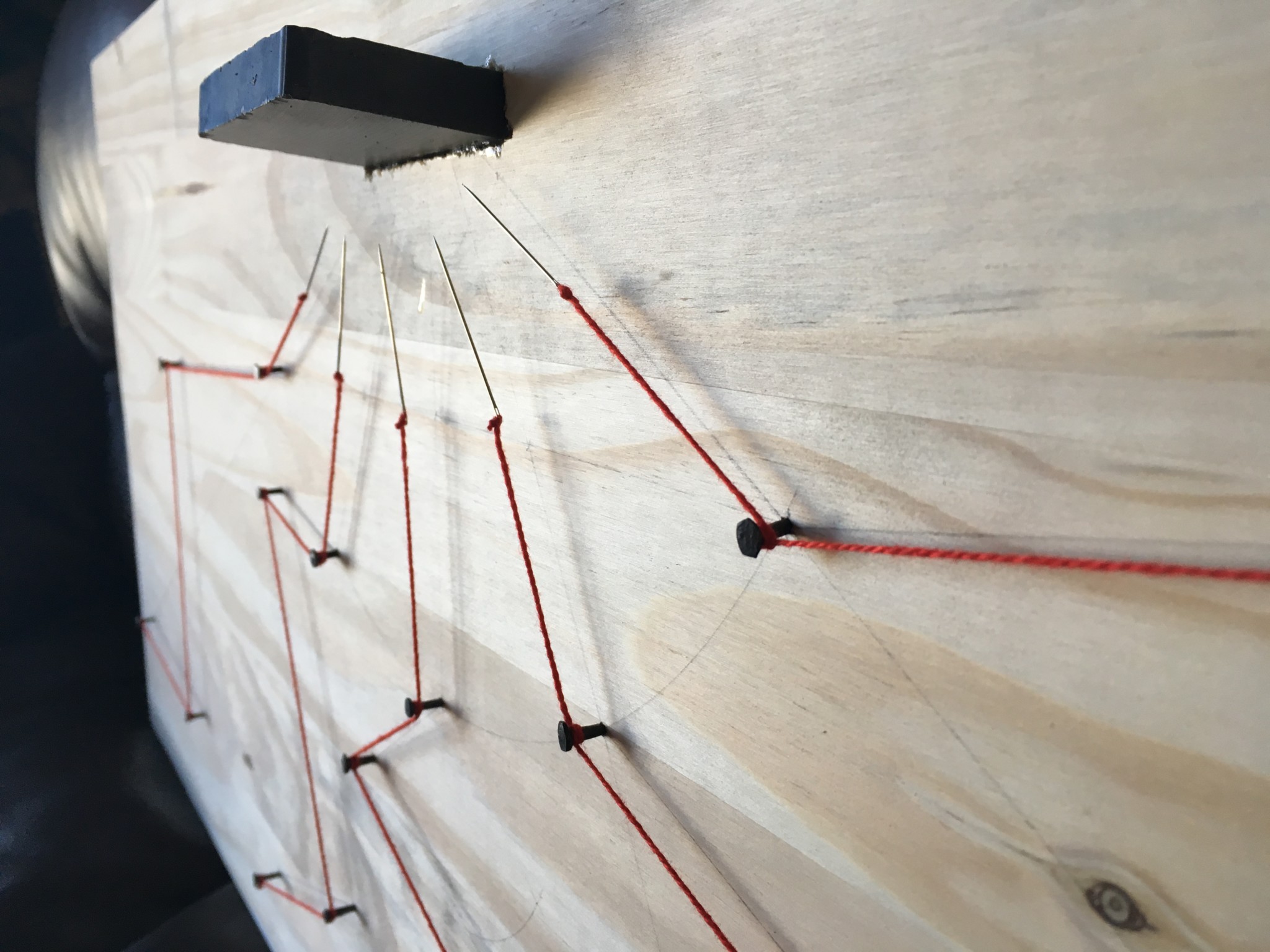 Deyan Momtchilov recently created this piece during the wrap-up of our “Why On Earth?” series. Below are his reflections.
Deyan Momtchilov recently created this piece during the wrap-up of our “Why On Earth?” series. Below are his reflections.
This piece was inspired by a series of sermons on the topic of calling, illustrated by the life of the biblical figure, David. It summarizes some of my thoughts on the subject, while highlighting pivotal questions, which I have left partially unanswered in order to allow room for contemplation on the part of the viewer.
Similar to previous works of mine, “Calling” revolves around a specific physical force, which I use as a metaphor to explore an abstract concept and make it more accessible.
The choice of materials becomes important, as I am trying to capture dynamic constructs, which seem to be more easily conveyed by media that can absorb and store the energy I put into them. And I mean this quite literally. While the pieces appear static at first glance, each of them is “loaded” with a charge of potential energy, which is deposited into the system by the physical interaction between me and the materials.
For this particular piece I used magnetism. It depicts calling as a draw in a specified direction and highlights the importance of proximity, which has direct impact on the magnitude of the force exercised on an object.
The steel needles represent individuals answering the call, while the threads outline their unique paths.
The arrangement was informed by several questions; I will name some of the more prominent ones in order to give my creative process some context.
One way of thinking about calling is as a synonym of destiny. It comes to fruition one way or another, and our oblivion or resistance only delay the inevitable. This view seems to be supported by the story of Jonah, who despite his rejection of a call to Nineveh, still ends up there. His journey includes unusual circumstances, which change his attitude along the way.
Another, perhaps less palatable example is Judas Iscariot. He fulfills a prophecy by betraying Jesus, which leads to the crucifixion and subsequently to the resurrection. Without this betrayal the most pivotal event in the gospel would not have occurred.
But was this Judas’ calling, his assigned role in the play we call life?
Or is calling, like the root of the word suggests, a call, an invitation that can be accepted or declined? Perhaps like Esau’s birthright, which he chose to trade in for some food in a moment of weakness?
Lastly, is a calling one specific mission, or is it a lifestyle?
David was clearly called to be king, even though his destiny did not come to fruition for many years after he was anointed. But what was the calling of the poor widow, who gave her last two copper coins as an offering? Even though we don’t know much else about her, the widow’s actions on that day were likely a window into a lifestyle of generosity.
This opens the possibility of looking at calling as a journey rather than a destination.
A movie by the name of “The Fourth Wiseman” comes to mind. It outlines the storey of a supposed forth Wiseman on his way to Bethlehem to bring a gift to the newborn King. Along his trip, he encounters people in need and spends the rest of his life and the monetary value of the gift he carries in their service.
If we view calling as a gift, service or contribution that we can make, did the fourth Wiseman miss his? Or was this a case of what Jesus describes in the parable of the Sheep and the Goats in Matthew 25, when he draws a parallel between “the least of his brothers and sisters” and himself personally?
Returning to the art piece, I think it is helpful to think of it as a visual aid or a meditative device that invites the viewers to engage with the topic and questions like the ones above. My hope is that this leads to contemplation and exploratory dialogue, which would draw the participants closer to each other and God in their pursuit of truth and meaning.




